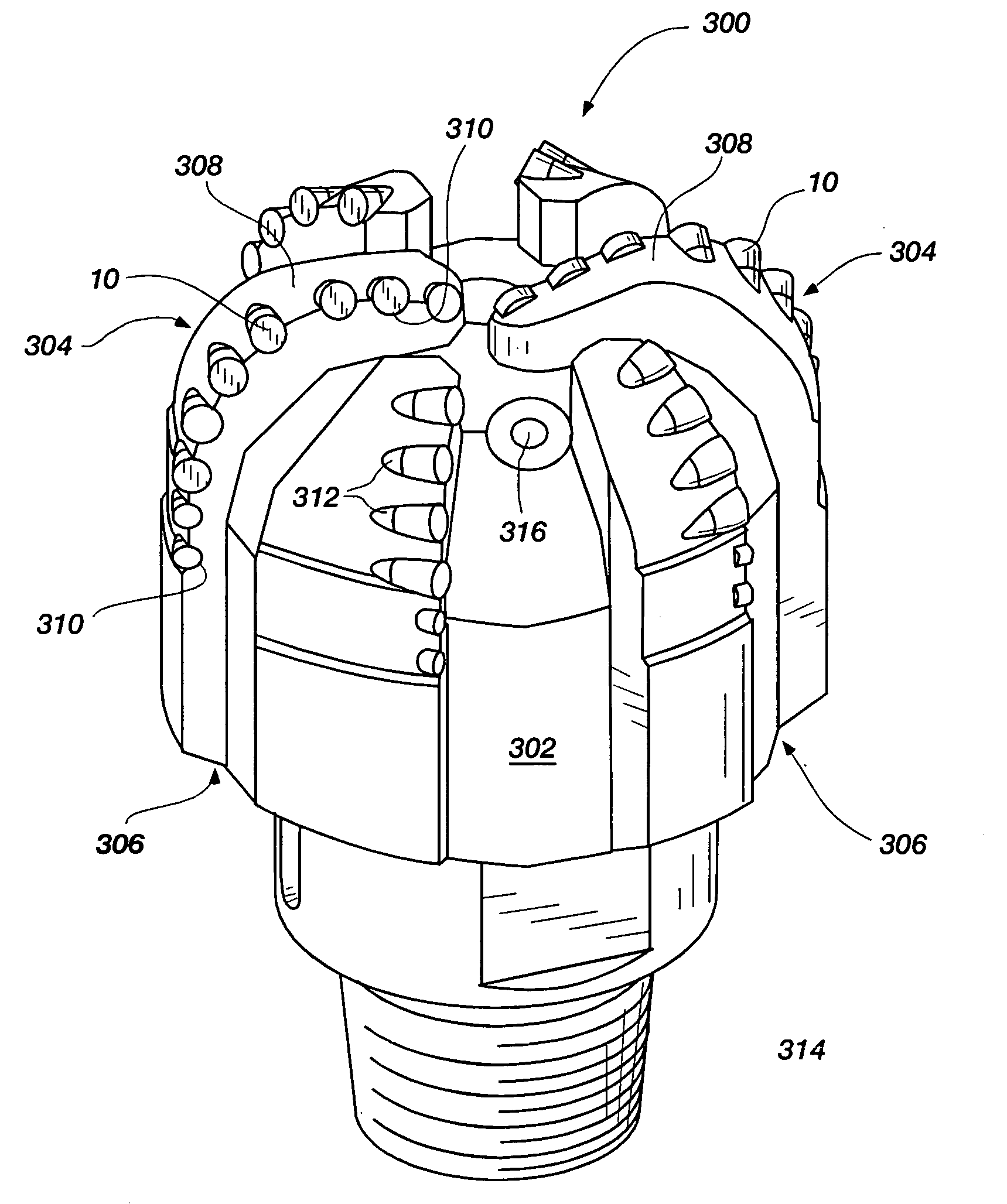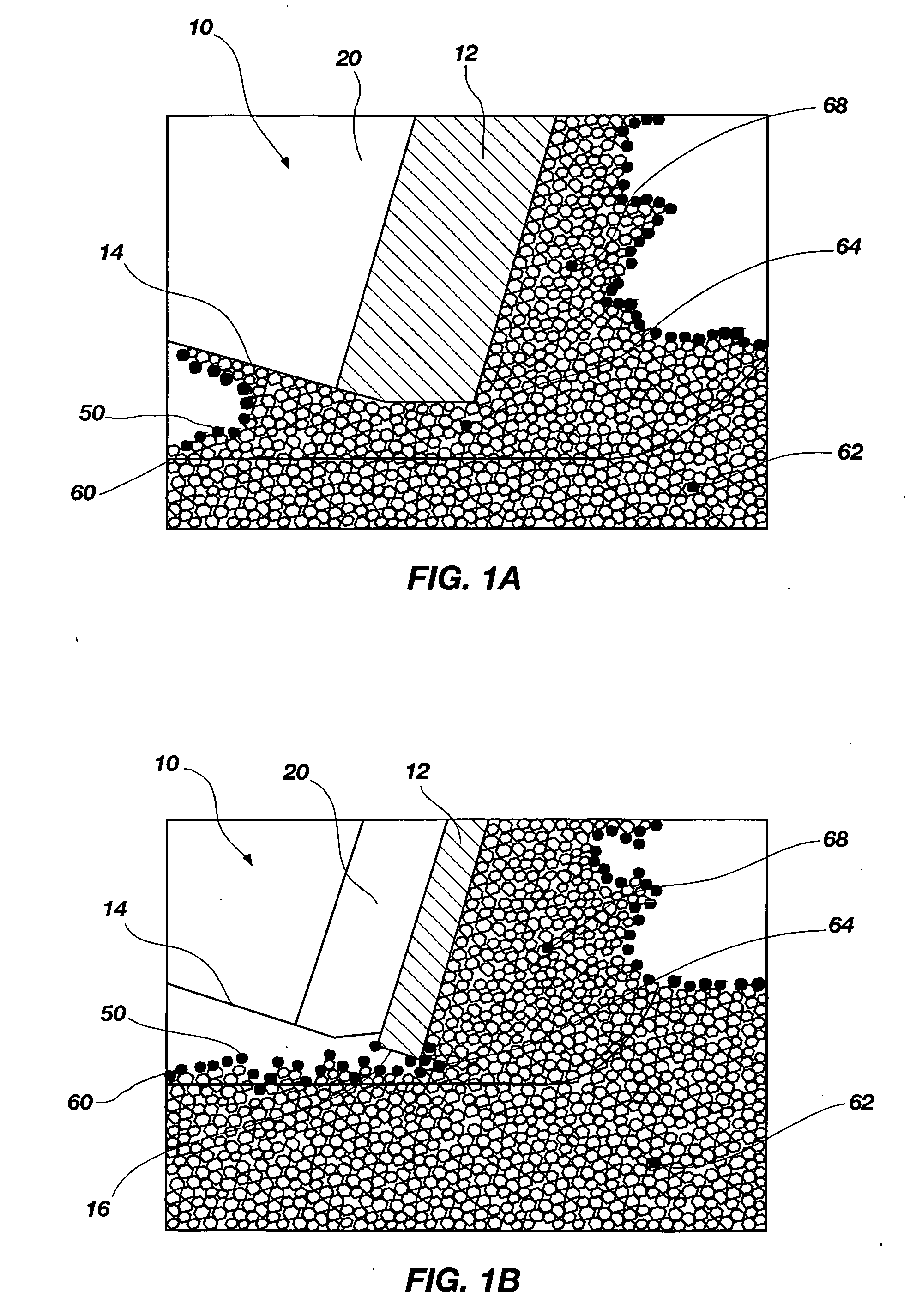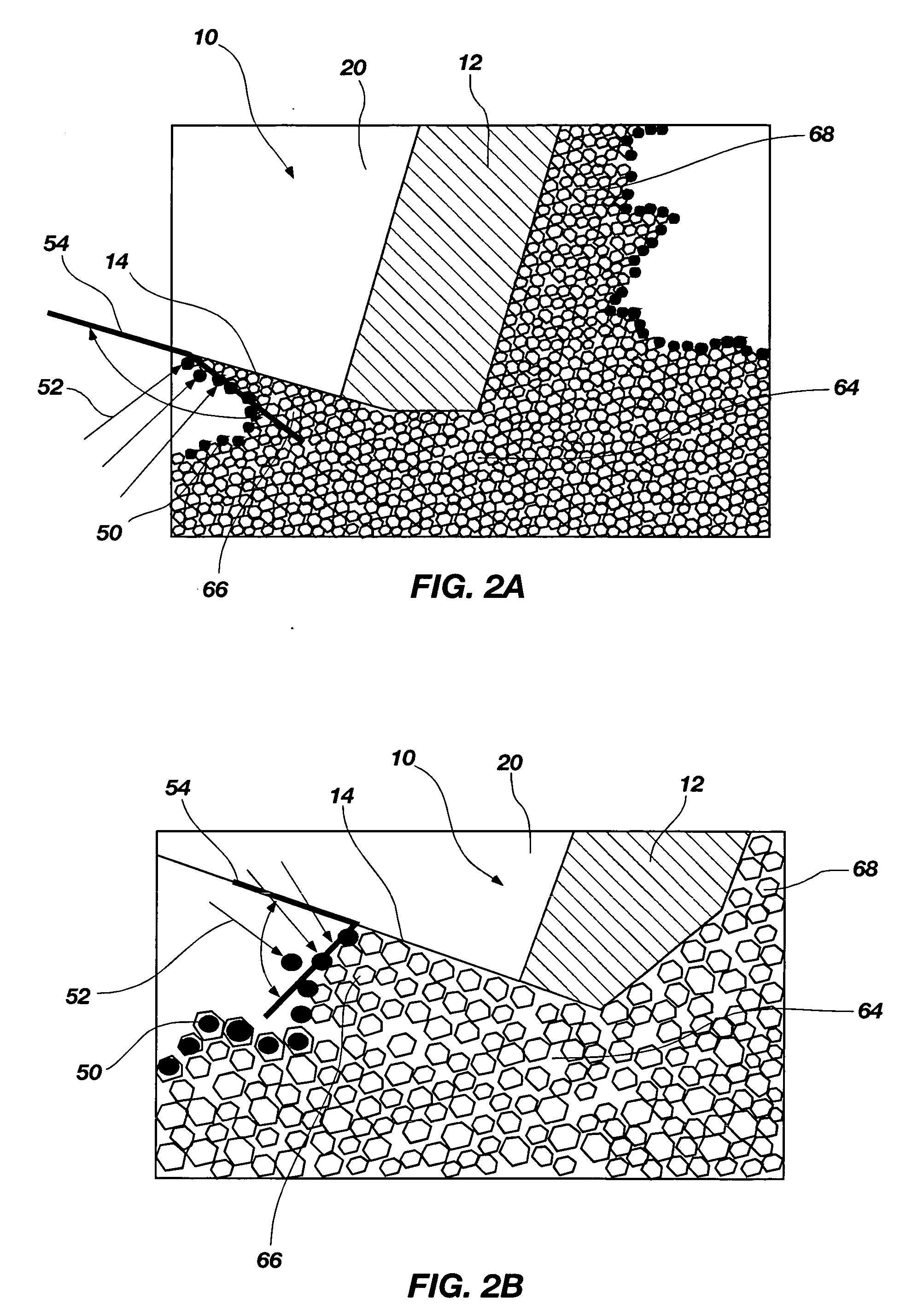Detritus flow management features for drag bit cutters and bits so equipped
a technology of detritus flow and drag bit cutter, which is applied in the field of drill bits, can solve the problems of affecting cutting performance, affecting the cutting performance, and adding to the fabrication cost of cutting elements, so as to inhibit the flow and buildup of detritus, increase the permeability, and improve the effect of permeability
- Summary
- Abstract
- Description
- Claims
- Application Information
AI Technical Summary
Benefits of technology
Problems solved by technology
Method used
Image
Examples
Embodiment Construction
[0029]It has been found that the recompacted rock detritus can have a confined strength on the same order of magnitude as virgin rock, and Particle Flow Code (PFC) models used in Discrete Element Modeling (DEM) of rock formations show that most of the energy in rock cutting using a fixed cutter is expended while extruding the recompacted detritus. Particle Flow Code is produced by Itasca Consulting Company of Minneapolis, Minn.
[0030]Additionally, PFC models show that the flow of detritus under the cutter (between the cutter and the formation being cut) is equally as important as the flow of detritus on the cutter face. This role of detritus flow affecting the cutting mechanism, and the consequent potential for differential sticking to the cutter barrel, which impairs cutter access to the formation being drilled and significantly reduces cutting efficiency, has previously gone unrecognized in the art. Innovations that affect the flow of detritus under the cutter offer opportunity to ...
PUM
 Login to View More
Login to View More Abstract
Description
Claims
Application Information
 Login to View More
Login to View More - R&D
- Intellectual Property
- Life Sciences
- Materials
- Tech Scout
- Unparalleled Data Quality
- Higher Quality Content
- 60% Fewer Hallucinations
Browse by: Latest US Patents, China's latest patents, Technical Efficacy Thesaurus, Application Domain, Technology Topic, Popular Technical Reports.
© 2025 PatSnap. All rights reserved.Legal|Privacy policy|Modern Slavery Act Transparency Statement|Sitemap|About US| Contact US: help@patsnap.com



